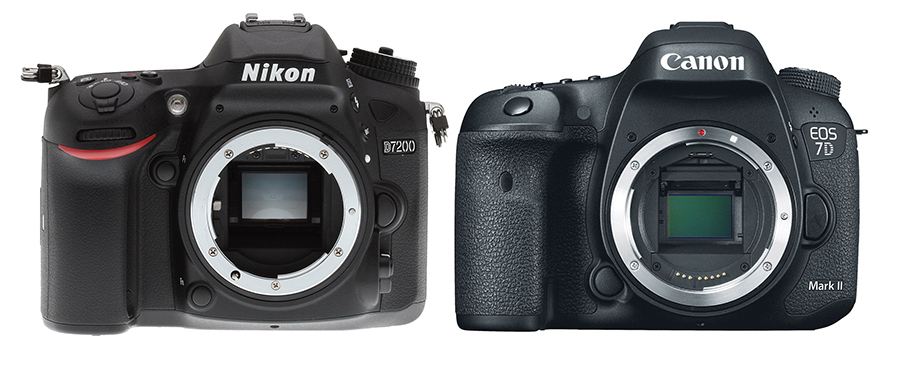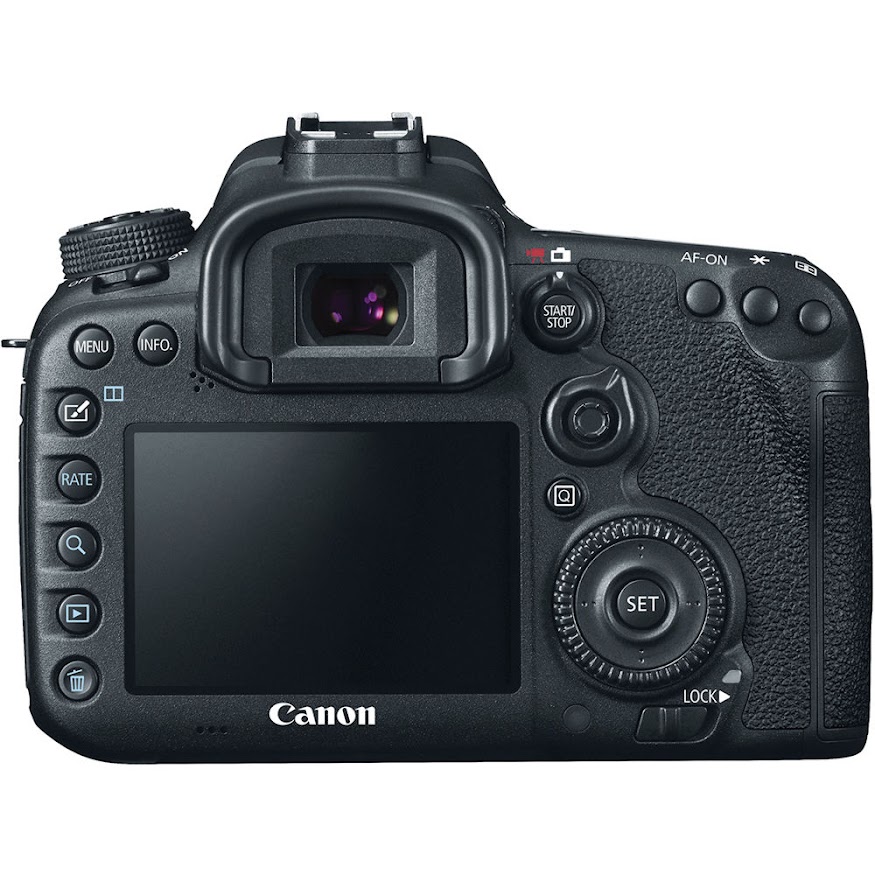If you like this post, help us share it
The competition between Canon and Nikon’s flagship APS-C DSLR has never been so competitive. Canon introduced its new 7D mark II a few months back and we have been using it for a while now from engagement shoots to studio shoots and we were very impressed by its performance. With Nikon’s announcement of the new D7200, everyone is excited to find out how it compares to the Canon 7D mark II. This comparison is probably most relevant until Nikon finally comes out its D400.
[REWIND – Canon 7D Mark II announced | Canon 7D mark II first impression | Canon 7D Mark II Hands on review | Canon 7D Mark II or Canon 5D Mark III]
Order your Nikon D7200 here. Check out the latest price at (B&H | Adorama | Amazon)
Order your Canon 7D mark II here. Check out the latest price at (B&H | Adorma | Amazon )



Resolution
Canon 7D mark II equips with a 20MP dual pixel AF CMOS sensor while Nikon D7200 offers a 24MP CMOS sensor without an optical low pass filter (AA). On megapixel count, the Nikon offers a slightly more resolution, but it is not going to be much of a difference. What’s more interesting is the dual pixel AF offer by Canon which will enhance the auto focus performance for video and for Nikon the absence of a low pass filter will result in sharper images.
Auto Focus System
The D7200 has an improved AF system using the Multi-CAM 3500DX II system, which still offers 51 AF points (the central 15 of which are cross-type), but now all of those points are sensitive to -3EV, while the D7100’s were limited to -2EV.
The Canon 7D Mark II also has a brand new autofocus. It features 65 AF points spread across a significant portion of the frame. All of these AF points are cross-type with the center AF point being dual cross-type. Similar to the Nikon D7200 all of those AF points are sensitive to –3EV. With Canon’s dual pixel AF system the camera is able to capture information about both subject position and depth whenever its mirror is up, using its image sensor. This can potentially provide more decisive autofocus and subject tracking in ‘Live View’ and while shooting video.
On paper, the Canon 7D mark II has a more impressive AF system with all 65 AF points being cross type and offer dual pixel AF for video. However, from experience Nikon’s algorithms for 3D tracking is better than Canon’s intelligent tracking and recognition (iTR).
Metering System
Nikon D7200 equips with a 2,016-pixel RGB metering sensor while Canon 7D Mark II has a 150,000-pixel RGB+IR metering sensor. The Canon metering systems sounds a lot more impressive but the difference is probably negligible.
ISO Range
Canon 7D mark II has an ISO range of 100-16,000 (expandable to 25,600) while Nikon D7200 has a much wider range up to 102,400 but both 51,200 and 102,000 are only in black and white. So both cameras effectively have a similar ISO range that works with colours. Having said that, Nikon cameras have always been leading in high ISO performance. It doesn’t really matter how high the ISO can go up to, APS-C cameras typically have a useful ISO range up to 3200-6400, after that you are losing too much dynamic range and seeing visible noise.
Frames per second
There is no gimmick here, Canon 7D mark II wins hands down capable of 10fps compare to 6fps with the Nikon D7200. But how often do you shoot at 10fps unless you are a sports photographer.
Video
Canon has always been leading in video and the 7D mark II is no exception. It offers 1080/60p while Nikon D7200 also offers 1080/60p but in 1.3x crop mode only.
LCD
The LCD on the Nikon d7200 has 1.2M dot at 3.2” while the Canon is still using an average 3” 1M dot LCD.
Buffer Depth
This feature is not important to you if you don’t shoot continuously. The Canon 7D mark II has a buffer depth of about 31 RAW and 1090 JPG, that equates to about 3 seconds of RAW and 10 seconds of JPG continuous shooting at 10fps. The Nikon D7200 has a buffer depth of 18 RAW and 100 JPG which equates to about 3 seconds and 15 seconds of continuous shooting. The Canon 7D mark II has a significant more buffer than the D7200, but it last much shorter since it shoots at a blasting 10fps.
Memory Card
Nikon D7200 offers two SD card slots while Canon 7D mark II has one CF slot and one SD slot. Which one is better is just a matter of your preference.
Wifi
Canon 7D mark II has no built in Wifi but it has a GPS. Nikon D7200 is the other way round, it has built in Wifi with NFC but no GPS. You can always add a GPS module or Wifi module if it is critical to you.
Battery Life
The difference in battery life between the 7D mark II and D7200 is a significant one. Nikon is rated for 1110 shots with a single battery charge while Canon is rated for 670 shots, only about half of what the Nikon can do.
Ergonomic Design
The ergonomic design between the two cameras is a controversial one, some like the Canon design while some prefer the Nikon’s. It is a very subjective topic and it depends a lot on how much exposure you have with either camera. The Canon 7D mark II is a substantial camera, with grip and ergonomics very similar to the EOS 5D Mark III which is a good sign. It sees a button layout almost identical to that of the 5D Mark III including the ‘AF area select’ thumb switch around the rear joystick. Compare to the D7200, the 7D mark II feels a bit more advance. The 7D mark II also has a higher shutter durability (rated 200,000 vs 150,000) and better weather sealing. It also offer usb 3.o whereas the D7200 is still using usb 2.0.
Price
The price plays a crucial role in choosing a camera, as well as the price of their accessories like flashes, lenses, etc. The Canon 7D mark II is currently priced at around $1799 (Body only) and $2149 (with 18-135mm). The Nikon D7200 is currently priced at $1199 (Body only) and $1699 (with 18-140mm). There is a significant difference in the price between the cameras. This tells us that the cameras do not fall in the same category, essentially the Canon 7D mark II should be comparing to the Nikon D400 which has not been released yet.
Final thoughts
Before you commit to choosing a camera or a brand, there are a lot more to consider than just comparing the specs of the cameras. There are lenses, flashes, upgrade path, etc to consider before choosing a camera or a brand. Both cameras are very capable of delivering what you need. The Canon 7D mark II is a slightly more professional camera with better video functions, faster frame rate and better ergonomic design, but it is also 33% more expensive. Ultimately, the 7D mark II should compare to the D400 but as of today, the next best comparison is with the new D7200. Comparing the main aspects of both cameras such as resolution, AF system, metering system and ISO performance, they are pretty much equal to each other despite what the specs say. It could even be that Nikon is better than Canon in AF and ISO performance, not to mention Nikon produces sharper images without the LPF. The Nikon D7200 has built in Wifi which I prefer over the GPS. It is also cheaper, longer battery life and larger LCD.
Although we are comparing two cameras in different category, the main functions (image resolution, AF speed and ISO performance) of the D7200 are as good as if not better than the 7D mark II. That’s got to be worth comparing to. For that reason, the cost difference between the cameras becomes a significant one. My vote goes to the cheaper and great performer Nikon D7200, but If you want better build quality/ergonomic design, better videoing and faster fps, Canon 7D mark II is your pick. Don’t get us wrong, we still love the Canon 7D mark II and have been very impressed by its performance. See our hands on reviews with the Canon 7D mark II here.
Nikon D7200 vs Canon 7D mark II specification comparison
Where can I find the equipment seen on this site?
If you find this site useful and planning to purchase any of the equipment seen on this site, please show your support by purchasing your photo equipment at B&H Photo Video, or through any of the affiliate links seen on this site.


